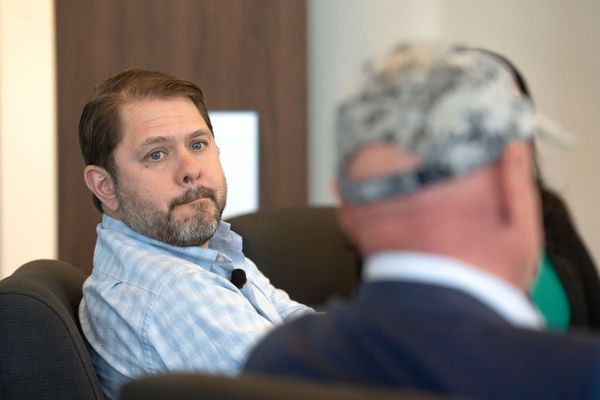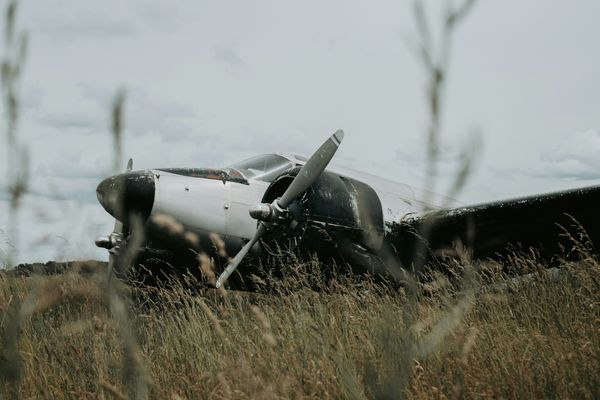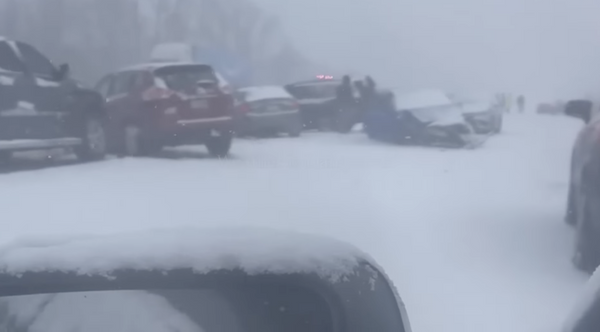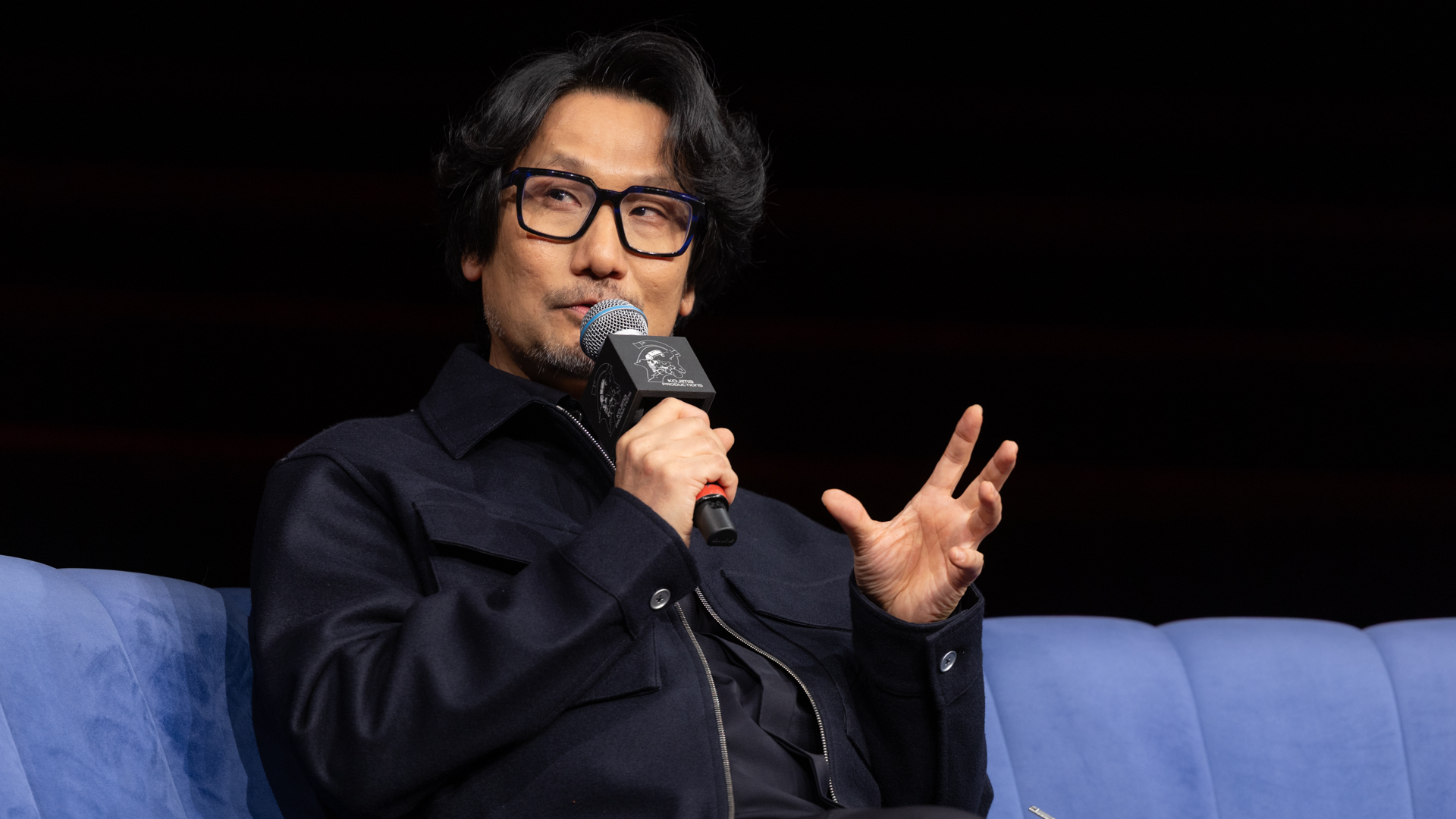
The run-up to Death Stranding 2: On The Beach has proven an age-old adage: you never know what to expect from a Hideo Kojima game. Watching gaming's best known auteur give a perfectly passable koala impression, it seems you never know what to expect from a Hideo Kojima interview either.
Kojima is at Sydney Film Festival, imitating a marsupial bark, because of Australia's prominent role in Death Stranding 2 – joining Mexico as one of the main locations for an action-packed freaky cargo delivery sequel about the perils of connection. But what led Kojima Productions to take Sam Porter's walkabout Down Under after his continental treks across the US and Iceland?
"I was thinking, for Death Stranding 2, what's a good continent that's similar to Death Stranding? Eurasia is too big. Africa is too long. So I thought Australia would be a perfect fit," says Kojima. "You need a great environment, desert, mountains, multiple species of animals as well. But the real reason is: when I decide on a location, I go location camping. I go there to scan, to interview, things like that. The last time was Iceland, which was great but a little cold. This time I made it a little warmer, but no! The pandemic happened and I couldn't go myself."
Fortunately, Kojima's contacts in Australia and Mexico allowed for remote research. However watching these locations' famously arid landscapes through a colleague's camera lens proved to be frustratingly different to visiting in-person. "It was all real-time. I was saying 'go a bit to the right', all of this. But it bummed me out because I wanted to go there," he says.
Taking the trip
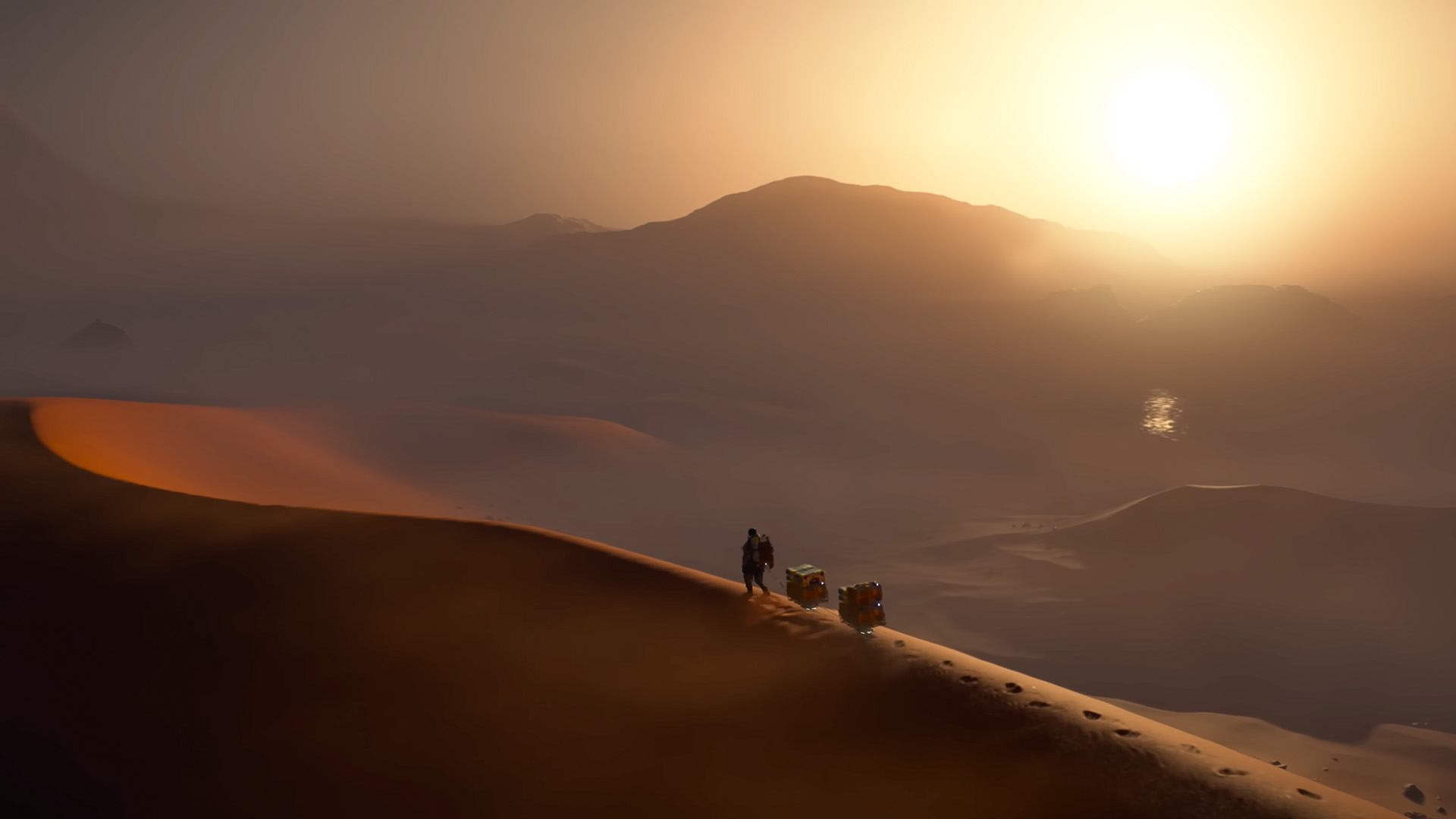
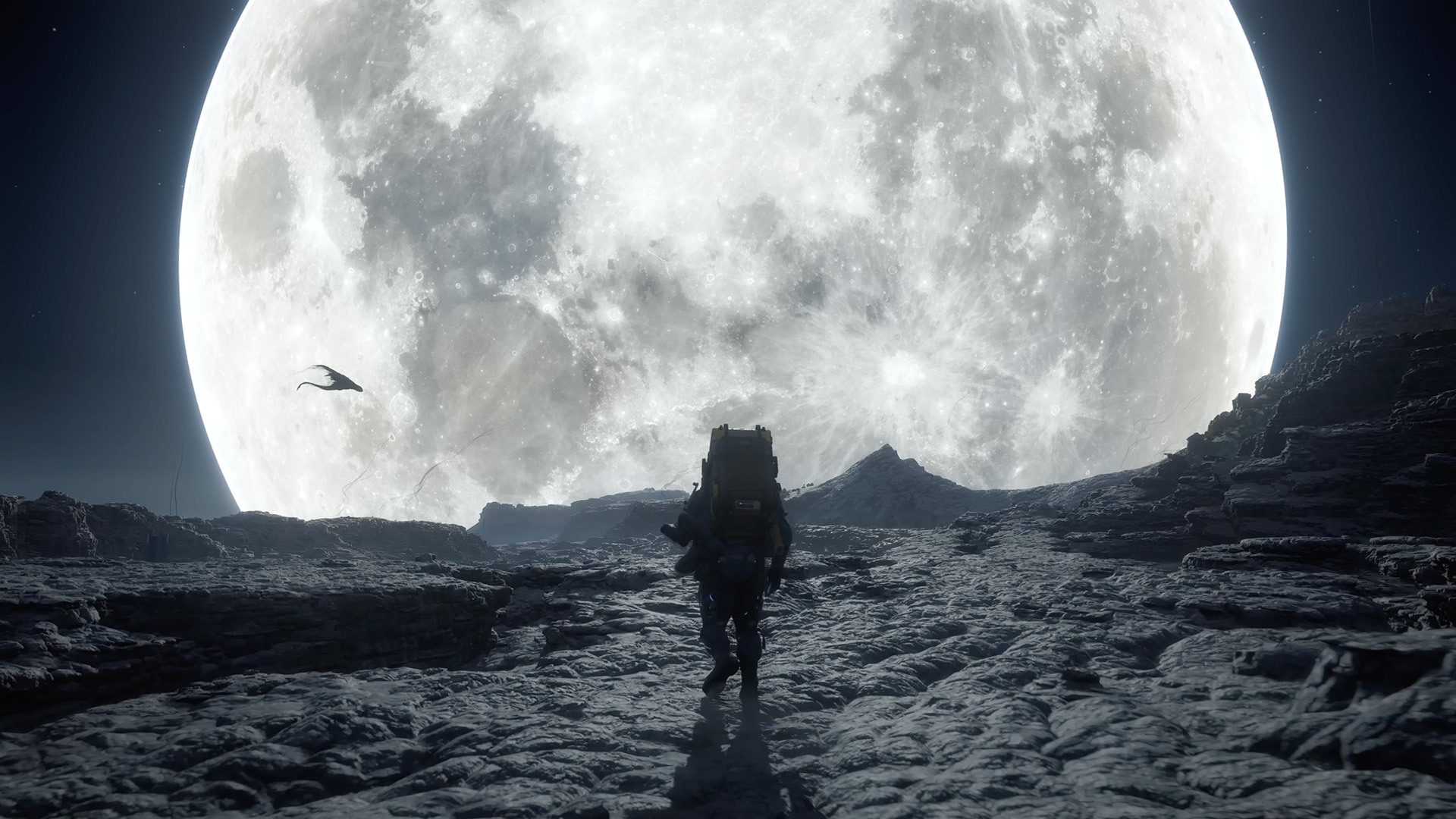
Death Stranding 2 hands-on: An emphasis on combat and vehicles feels like an evolution of Metal Gear Solid 5, while continuing to push the first game's in-depth hiking physicality
Unlike the first Death Stranding's inhospitable landscape, the sequel features a rich variety of wildlife. Kojima's an animal lover – which won't surprise anyone who ate their way through Metal Gear Solid 3 or extracted countless bewildered sheep by helicopter in Metal Gear Solid 5. But, like Death Stranding 2's setting, the pandemic put Australia's truly unique animals tantalizingly out of reach.
"I asked my staff to go to the zoo and record koala sounds," says Kojima, complete with a demonstration. "'Bwah, bwah, bwah!' But I couldn't understand. I was just getting sound recordings. It was fun."
He wasn't alone in leaning toward the cute and cuddly, rather than the military hardware and cybernetic enhancements that many of his games dabble in. "There's a lot of people who love animals. Maybe people in the team said no to creating a new mech, but they wanted to design new animals."
This isn't merely in pursuit of an authentic outback. A side mission tasks players with creating a wildlife sanctuary, where Kojima invites players to share his affection for wallabies, koalas, kangaroos and cassowaries, discovering the small details the team found researching the unique wildlife.
While a trip to Sydney's Taronga Zoo finally introduced Kojima to a koala (did he tweet it? You bet), it also exposed a rookie zoology error: he'd put a bird in Death Stranding 2 which doesn't reside in that territory (likely a cassowary, a turquoise-necked flightless bird only found in Queensland).
The art of collaboration
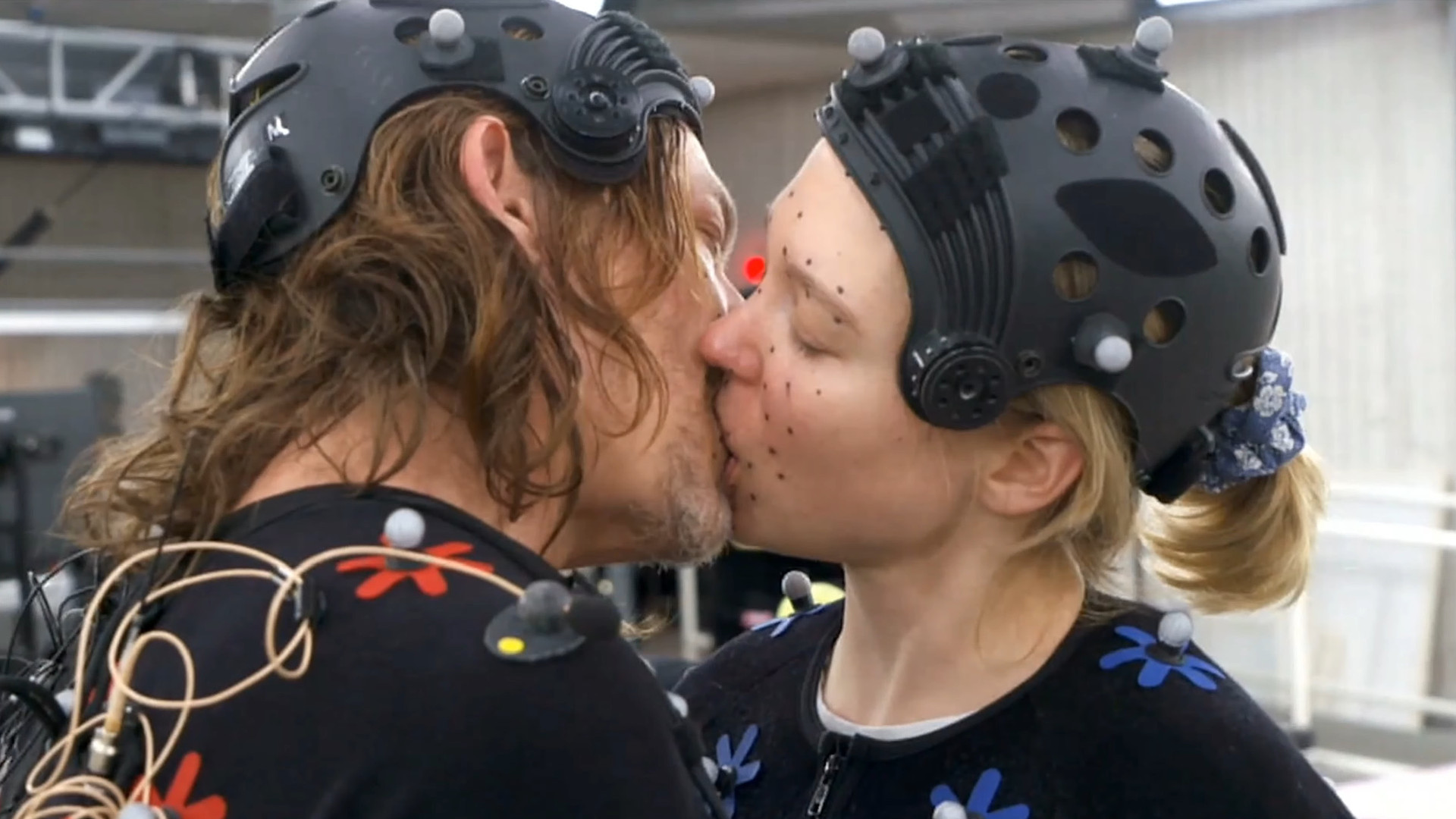
"No, you're not Snake. You just have a bandana on your head!"
Hideo Kojima
Death Stranding 2 features numerous characters played by returning heavyweight performers like Léa Seydoux, Norman Reedus and Troy Baker. But a new addition to the cast "surprised" even Kojima and the production crew: Luca Marinelli, the actor playing Neil – a mysterious new character we saw at Summer Games Fest in a memorable firefight.
In 2020, Kojima watched a movie starring the Italian actor and commented how he looked like his most famous creation. Marinelli, a fan since the original Metal Gear, was deeply touched and passed on a message to Kojima's team.
"I thought Neil's character was very important. We had a very strong character who was played by Mads [Mikkelsen]," says Kojima. "I needed someone who can top Mads and Cliff. I thought Luca could do it."
He was proven right. Marinelli came to film in LA with costars Norman Reedus and Alissa Jung (the German actress who plays Lucy – who is also married to Marinelli), for motion capture shoots attended by 30-40 people, determined to impress his gaming idol. He more than succeeded. "His acting was just so, so spectacular," says Kojima. "Léa comes in or Norman comes in, they're usually on their phones. But then when Luca started to perform, everyone put their phones down and concentrated."
After Neil's character reveal, Kojima asked Luca how he and his friends reacted. Luca shared a misconception with many players about his bandana-wearing commando. "Luca goes 'Oh Snake is wonderful. I'm so happy to be Snake.'" recalls Kojima. "I go 'no, you're not Snake. You just have a bandana on your head!"
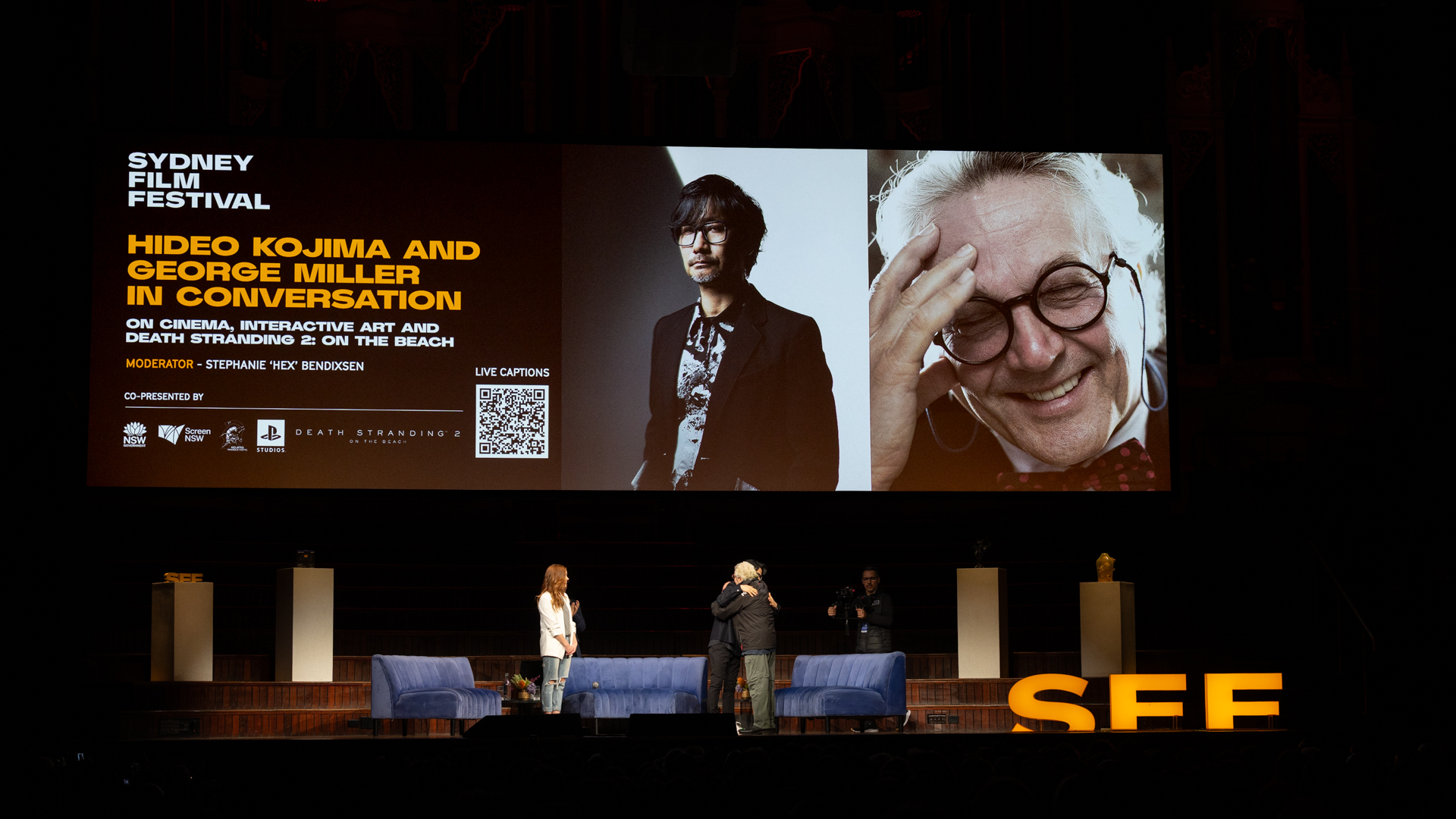
Aside from the Death Stranding games' actors and Roman screen kings, we've seen a range of A-listers appear – including the likes of Guillermo del Toro, Nicolas Winding Refn, and even Conan O'Brian. That's not changing for the sequel which features filmmaker George Miller as Tarman, captain of the DHV Magellan, and a lengthy list of as-yet-unrevealed cameos.
For Kojima, it's a roundabout accountability method. As if his studio's vast budget wasn't under enough pressure, he also needs to impress his idols-turned-colleagues. "George is my God. If I work with him, I'm really happy, but if I have my God in my game I cannot escape. I have to make him perfect!"
Later, Kojima suggested Miller was a big reason for his interest in Australia. "I love George, so I think Australia is the centre of the world!" he joked, an impression formed when the Australian director blew Kojima's teenage mind in the late '70s, "when I saw Mad Max at 16, I limped out of the theater!"
The creative gene
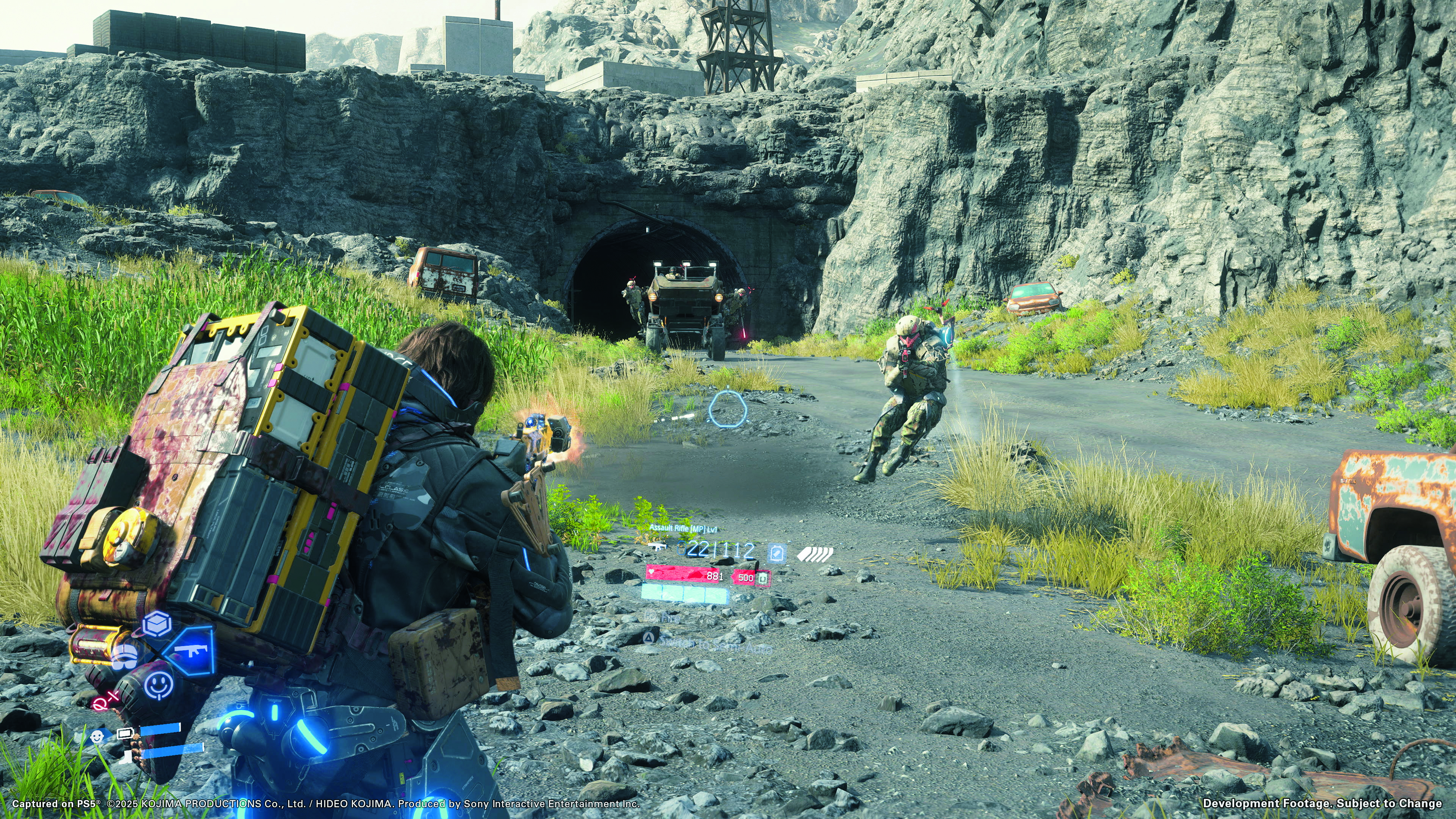
"I became sick. I thought it was the end of the world"
Hideo Kojima
For Kojima, eureka moments strike at any time – whether that's when watching movies, talking, eating, walking, or even soaking in the bathtub.
"It's almost a disease. I'm imagining things all the time. Even talking with my family, in my head I'm in a totally different world" he says. "A lot of people don't understand. When I talk to George [Miller], he understood. He has the same disease!", he says, grateful to find fellow dreamers. "I'm happy to be in this job because I'm free to imagine wherever I want."
As head of Kojima Productions, the developer always has an eye on what's next. He's always looking for technological improvements that'll still be relevant in the future, with a track record that stretches back to Boktai: The Sun Is in Your Hand.
The 2003 vampire-hunting Game Boy Advance RPG, which he produced and designed, relied on UV-sensors that charged its in-game weapons with real sunlight. "UV sensors were so expensive at the time," he says, describing how, in his time at Konami, its toy division produced a UV teddy bear that measured light levels. It tanked, perhaps unsurprisingly, so the company ended up with a special storage unit rammed with delicate sensors. He negotiated a cut-price deal, and that moment of opportunism gave the world Boktai. "You have to select the ideas at the best time."

For its creator, the road to Death Stranding 2's launch has proven to be as long and arduous as any Sam Porter ever faced. We all suffered in the pandemic, says Kojima, acknowledging many of us lost loved ones. We shared a challenging experience, and overcame it, even if at times the end never felt in sight.
"During the pandemic, I thought 'I can't pull this off, meet people, scan people, shoot with people'. I almost gave up," confides Kojima. "The staff were all remote. I became sick. I thought it was the end of the world. But now Death Stranding 2 is finally done! I've been creating games throughout my career, but Death Stranding 2 was the most difficult challenge ever."
Trying to run performance capture shoots in LA, against a backdrop of constant disruption from positive COVID tests, drove him close to despair. "It's almost to a point where I gave up, but it came back so I felt like I reconnected again. This is another reason why I'm doing the world tour. I couldn't go out, travel and meet people for the past five years. I thought it's about time."
It's a pensive note to end on. "It feels like this was a good last answer. Yes, I wanted people to feel a little sad," he says, smirking.
As an artist, Kojima has complex thoughts on the troubled reality of our post-pandemic interconnected, perhaps even overconnected, existence. We all faced what felt like the end of the world. Death Stranding 2's biggest question – "should we have connected?" – is a perspective we'll likely be unpacking and debating for months to come. Seeing Kojima reenergized on a world tour, joyfully reconnecting with fans, idols, and koalas alike, we can probably guess his answer already.



